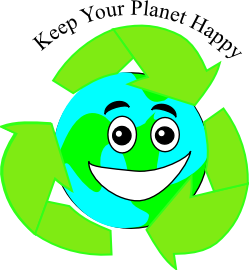The linear economy model is now recognised to be flawed and having an adverse effect on the world around us. It is based on infinite resources that are sourced, used
and then discarded or disposed of without almost any concern given to the damage that is done as a result.
and then discarded or disposed of without almost any concern given to the damage that is done as a result.
The circular economy model is set to address the issues highlighted when looking more closely at the linear economy model by recognising the fact that the resources of
the planet are not infinite but are indeed finite and are in many cases in danger of becoming depleted.
As such the circular economy tries to slow down or if possible reduce completely the rate at which we depend on and use up these resources by recycling and reusing
them many times.
the planet are not infinite but are indeed finite and are in many cases in danger of becoming depleted.
As such the circular economy tries to slow down or if possible reduce completely the rate at which we depend on and use up these resources by recycling and reusing
them many times.


Circular Economy
A typical example of the Linear Economy Model used for teaching purposes:
We drill for oil and then from this make petroleum and plastic. We burn the petroleum in our vehicles and we turn the plastic into food containers and bottles.
When we are finished with the food containers and bottles we discard these and they go to landfill.
Drilling for oil can contaminate and reduce the habitat that is used in nature for plants and animals.
Spillages of the oil can occur at various stages from the initial drilling point to the refinery and transportation of the product usually carried out by lorries, ships, etc, causes
pollution of the air and the atmosphere as they burn fuel in the process of moving the oil from one place to another.
The main points here are:
We drill for oil and then from this make petroleum and plastic. We burn the petroleum in our vehicles and we turn the plastic into food containers and bottles.
When we are finished with the food containers and bottles we discard these and they go to landfill.
Drilling for oil can contaminate and reduce the habitat that is used in nature for plants and animals.
Spillages of the oil can occur at various stages from the initial drilling point to the refinery and transportation of the product usually carried out by lorries, ships, etc, causes
pollution of the air and the atmosphere as they burn fuel in the process of moving the oil from one place to another.
The main points here are:
|
●
|
That natural resources are finite and will eventually run out
|
|
●
|
That we are polluting the land, the sea and the air
|
|
●
|
That we are both reducing and polluting the habitat needed in nature
|
|
●
|
That we are increasing the rate at which we are causing problems
|
|
●
|
That we will not be able to repair the damage once it is done
|
Linear vs Circular Economy Model